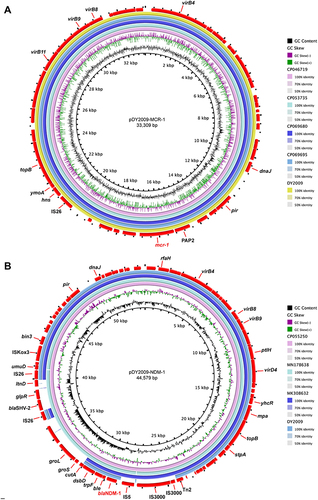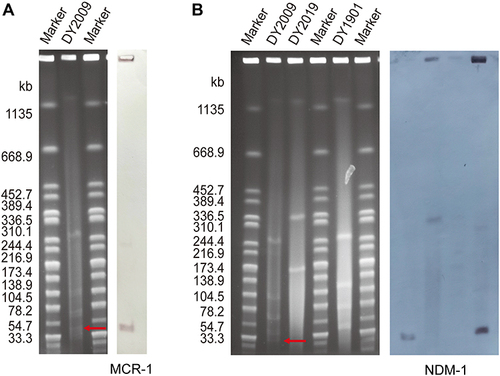Figures & data
Table 1 Antimicrobial Susceptibilities of Strain Klebsiella pneumoniae DY2009
Table 2 Antimicrobial Resistance Genes Encoded by Klebsiella pneumoniae DY2009
Figure 1 Alignment of mcr-1/blaNDM-1-harboring plasmids detected in this study. (A) Genomic map of the mcr-1-carrying Inx4 pDY2009-MCR-1 plasmid with four closely related plasmids (CP046719, CP053735, CP069680, CP069695). (B) Circular genome alignment of pDY2009-NDM-1 with three blaNDM-bearing IncX3 plasmids (CP055250, MN178638, MK308632). Arrows portrayed genes. The circular map was generated with the BLAST Ring Image Generator.

Figure 2 Plasmid analysis of the ST5571 colistin-resistant CRKP strain DY2009 via S1-PFGE and Southern blotting using mcr-1 and blaNDM-1 probes. (A) Analysis of pDY2009-MCR-1. (B) Analysis of pDY2009-NDM-1. Due to the similar plasmid size of pDY2009-MCR-1 and pDY2009-NDM-1, NDM-1-producing clinical isolates DY2019 and DY1901 recovered from the same hospital were used as control. The red arrows indicate the locations of the resistance plasmid.

